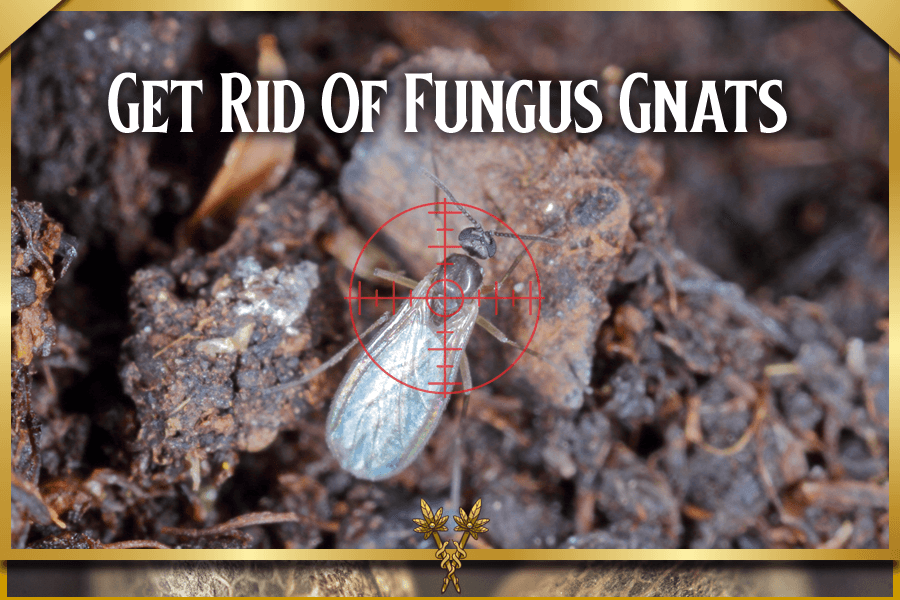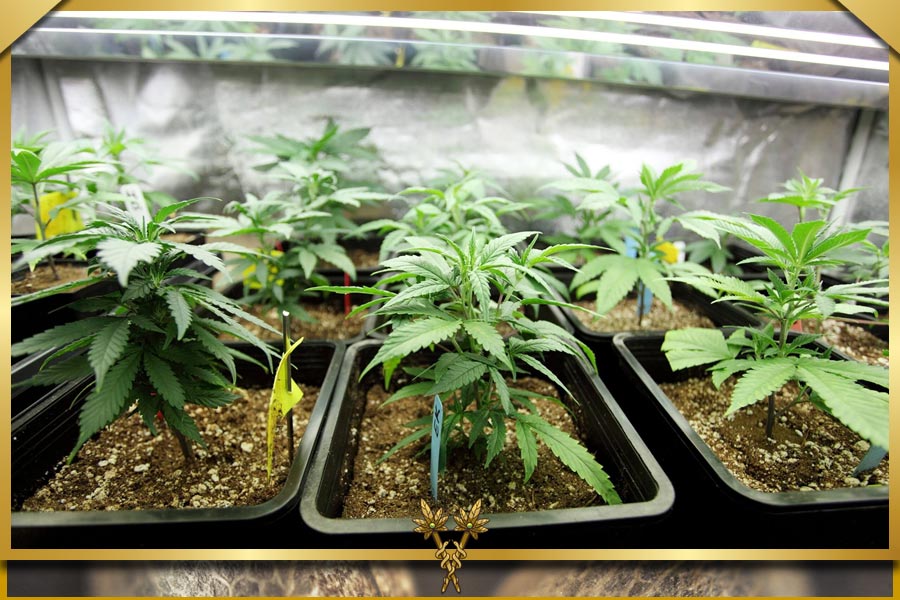We can help if you’re an Australian who wants to grow marijuana at home. It doesn’t matter if you’re from central, north, east, or other parts of Oz. Our outdoor marijuana grow calendar will undoubtedly get things started and assist you in harvesting the crop of your desires.
When Is the Best Grow Calendar for Australia?
Australia’s growing season typically lasts from August to April. Australia experiences a variety of climates and seasons as a result of its vast geographic size. For instance, the environment in the north is typically tropical. Most of the vegetation in the central regions are dry, desert-like bushes that receive little annual rainfall. Lastly, the southern part typically has a moderate climate.
You can count on Australia receiving plenty of sunshine, which makes it the ideal location for growing marijuana outdoors. The buds will be as big, dense, and potent as possible if there is enough light. The calendars below are split into two sections: the first one covers Australia’s east, west, south, and central regions, and the second one concentrates on the north.
Sativa-dominant varieties are best to stick with because they do best in warm, equatorial regions with a long growing season, which are conditions in Australia. Indicas, on the other hand, come from colder climates, which accounts for their shorter growth cycle. But pay attention to them. Do your homework in advance and look for the best strains for your situation, especially the weather and climate.
East, West, South, and Central Australia
The weather will generally be warm, temperate, and pleasant. Summer in southern Australia typically lasts from December through February, with four seasons. On the other hand, it is typically colder and rainier in the mountainous southeast. The winters can also be harsh, and sometimes the highest peaks are covered in snow the entire year.
The central region of Australia, which is the country’s majority, has a slightly different situation. This region experiences higher temperatures because deserts and a semiarid climate characterise it. Additionally, the hottest days of the year occur there. Meaning you must irrigate the plants more frequently and heavily.
Note: Melbourne, Perth, and Brisbane are the basis for the average day length and temperature values.
August
- Average Day Length: 10.5-11.5 hours (11-11.5 hours in the desert)
- Average Temperature: 8-18°C (7-23°C in the desert)
The ideal time to plant seeds is in August, the final month of winter. Following this easy germination instruction, the seeds should germinate in a few days.
It’s time to plant after the taproot has broken through the seed coat. Around 20–25°C is the ideal temperature range for seedlings. It would still be too chilly outside in August. Therefore, it is best to begin inside on a window sill. The young plants can also benefit from the warmth and comfort of heaters or heating mats. You would need to wait until it was warm enough outside if you wanted to grow everything outside.
Start growing the mother plants indoors if you intend to clone them.
September
- Average Day Length: 11.5-12.5 hours
- Average Temperature: 9-20°C (11-27°C in the desert)
You still have time to start the seeds when September rolls around. Remind yourself to continue giving the seedlings critical warmth.
Additionally, there are lighting requirements to consider. It is advised to use fluorescent lightings, such as CFL and T5 bulbs. They must have access to light for at least 12 hours each day. If the amount of exposure to sunlight is insufficient, supplement it with a grow lamp. To increase the light available indoors, you can cover the walls with reflective materials.
Watch the developing plants. The stems might need more light if they appear pale, thin, and elongated. If so, try attaching the lamps more closely.
October
- Average Day Length: 12.5-13.5 hours
- Average Temperature: 11-22°C (15-32°C in the desert)
The days will start growing longer as October begins. Aim for at least 13 hours of sunlight per day, if you can. You may not need to use grow lamps to supplement natural light.
You can put the plants outside once the daytime high temperature is 21°C. For those who reside in warmer climates, this is particularly relevant. Temperatures around 18°C at night are ideal for the plant’s growth; any higher could stunt it. Most likely, the flowering plants would still need protection from the cold on October evenings, so you might need to bring them inside.
Cloning? Take stem cuttings from the parent plant now.
November
- Average Day Length: 13.5-14 hours
- Average Temperature: 13-25°C (18-35°C in the desert)
It should be the end of spring or the start of summer by November. To put it another way, it is warm enough for the plants to spend the entire day outside. All you need to do is ensure the temperature never falls below 15°C. The plants might die the next day due to being shocked by this.
The best time to start growing auto-flowering plants is in November as well. In this manner, you can harvest in late summer or in the first few weeks of February. However, the life cycle differs from strain to strain. Before starting, make sure to do your research.
December
- Average Day Length: 14 hours
- Average Temperature: 15-27°C (20-36°C)
In Australia, summer officially starts in December. The amount of daylight and temperatures will both increase during this period. Additionally, this is the time that the plants’ vegetative growth begins to accelerate. In other words, the stems and branches get stronger, the leaf cover gets lusher, and the roots get older and bigger. In addition, the plants will noticeably grow taller.
The flower production for those cultivating autos should be well underway.
January
- Average Day Length: 14 hours (13.5 hours in the desert)
- Average Temperature: 17-28°C (23-39°C in the desert)
The days will get hotter throughout January, and this pattern should last through February. The time has come for growers of regular or non-feminised cannabis seeds to determine the sex of their plants. This requires observing the pre-flowers, which are essentially tiny adult buds. Because they are so small, you need a magnifying tool to see them. They manifest themselves at the node or the point where the main stem and the side branches converge.
Typically, males would make up about half of the group. Once found, it is crucial to isolate or discard them immediately. They shouldn’t pollinate the female plants because that would significantly reduce the buds’ potency, smoothness, and general quality.
February
- Average Day Length: 13 hours
- Average Temperature: 17-28°C (22-37°C in the desert)
Cannabis plants start flowering in February. They prefer a comfortable room temperature of 20–26 °C and relatively humid at 40–50 % during this time. The plants can develop to their full potential at these ranges, producing large, dense, and trichome-packed buds.
Never exceed 26 degrees. Both the degradation of terpenes and interference with bud production could result from this. The potency, smell, and flavours of the nuggets would all be noticeably diminished when eaten. However, too-cold temperatures can also be problematic because they affect the flowers’ quality.
March
- Average Day Length: 12-12.5 hours
- Average Temperature: 16-27°C (18-33°C in the desert)
Autumn officially begins in March, marking the end of the growing season. Although it will still be warm, the temperatures will gradually fall. In addition, daylight hours would decrease from 13 to 12. In any case, gather the colas before the weather gets even colder.
Before harvesting, use magnifying tools to examine the trichomes, the crystalline growths covering the buds and leaves. They should have a milky or cloudy appearance, which indicates that resin production has peaked. If this were the case, the THC would start converting to CBN, producing a weaker but highly potent high. If you want strong psychoactive effects, do not wait until they become amber.
April
- Average Day Length: 11-11.5 hours (11-12 hours in the desert)
- Average Temperature: 13-23°C (13-28°C in the desert)
The official end of the growing season is in April. If you still need to harvest the nuggets, do so right away. The risk of bud rot increases if you wait for the cold and moisture to settle in. The fungus that attacks buds from the inside out spreads quickly as well. The infection could destroy the remaining crops if untreated.
Northern Australia
Be cautious. All year long, Australia’s upper half has a tropical climate. Moreover, there are only two seasons: dry (April to November) and wet (November to April). The growing schedule coincides with the rainy season. Cannabis plants are more prone to mould and mildew during this time, particularly bud rot and powdery mildew.
But even during rainy seasons, there is plenty of heat. Temperatures in warmer areas can soar to 30–50°C. However, the length of the day is noticeably shorter than in the southern regions. Make sure the plants always have access to enough light.
August
- Average Day Length: 11.5-12 hours
- Average Temperature: 17.5-32°C
It’s time to start planning in August. Invest in the seeds if you haven’t already. What should you buy? You can choose using this selection of premium cannabis seeds here at Mediseed Man. The seeds in this varied collection are divided into different categories based on their potency, recreational effects, therapeutic uses, and flavours. The strain of choice should ideally be more mould and mildew-resistant, like Amnesia Feminized, Hindu Kush, and Jack Herer Autoflower.
September
- Average Day Length: 12 hours
- Average Temperature: 21-32°C
The growing season in northern regions officially begins in September. Start by using wet paper towels to germinate the seeds. Although there are other approaches, this is among the simplest and most effective.
Transplant the seedlings into a solo cup once they have taken root. Put it carefully in a well-lit area, such as a windowsill. They would require at least 12 hours of light each day. Low-intensity grow lamps can supplement sunlight if there is not enough of it.
October
- Average Day Length: 12-12.5 hours
- Average Temperature: 25-35°C
You can now relocate your cannabis plants outside without any risk. The daytime hours will start to lengthen as of October. But because the temperature could rise to as high as 35°C, ensure the plants are always well-hydrated. Insert your finger one to two inches into the topsoil. The time has come to water the plants if the air feels dry.
You can begin taking healthy cuttings from the mother plant if you want to propagate clones.
November
- Average Day Length: 12.5-13 hours
- Average Temperature: 25-35°C
November typically ranks among the hottest months in northern Australia. This is also the start of the rainy season. Remember that more moisture increases the likelihood of mould and mildew, so be cautious. Till December, these weather conditions are likely to persist.
In any case, this is the time when the plants will begin to flourish. Give them everything they require to support this maturation, such as the appropriate amount of moisture, sunlight, and nutrients.
Start sowing the seeds right away if you want to grow autos. This guarantees that February will be the harvest season.
December
- Average Day Length: 13 hours
- Average Temperature: 25-34°C
By December, vegetative growth should be well underway. The plants could quickly grow a few inches in height in a single day. In addition to growing vertically, they would also spread outward, their foliage growing thicker and more numerous.
In terms of autoflowers, they will begin to bloom sometime this month.
January
- Average Day Length: 13 hours
- Average Temperature: 24-32°C
January is the wettest month of the year in the north. This also means that marijuana plants are most susceptible to mould and mildew. Watch out for any early indications of an infection. For instance, early-stage bud rot typically results in the buds withering and discolouring. However, powdery mildew appears on the leaves as a white, powdery mould.
The pre-flowers of the cannabis plant begin to emerge in January. In other words, plants raised from common seeds would start to show signs of gender.
February
- Average Day Length: 12.5-13 hours
- Average Temperature: 24-32°C
The number of daylight hours will start to decrease once February arrives. Photoperiod plants would be ready for collection in a few more weeks.
Autoflowers, meanwhile, must be prepared for harvesting right now. Start by cutting the colas off. Before hanging each stalk upside-down to dry, remove the fan leaves. Doing this guarantees that plant material has been properly aged and dried before consumption. Curing comes after drying, which can take anywhere from 5 to 15 days.
March
- Average Day Length: 11-12.5 hours
- Average Temperature: 23-33°C
The days would start to become less than 12 hours long by March. Typically, this is the best time to harvest the highly desired buds. However, some strains require a little more time. Additionally, tropical regions typically extend the growing season by a few extra weeks.
About two weeks before harvest, flush the plants—or water them—in either case. The flavour profile, smoothness, and general quality of the nuggets are significantly improved due to them using up the remaining nutrients and chemicals.
April
- Average Day Length: 11.5-12 hours
- Average Temperature: 22-33°C
The drier months start in April. Expect higher-than-average temperatures and humidity levels conducive to mould and bud rot growth. Therefore, be sure to gather the buds as soon as you can.
Growing marijuana in Australia
Australia is an excellent location for outdoor marijuana plant cultivation. One benefit is that it is warm enough. In some places, the sun shines brightly nearly constantly. However, proper timing is essential to get the most out of the grow.
Creating ideal growing conditions for your plants is a given. Be aware that some issues might be more prevalent in particular places. This includes fungus, heat stress, a lack of light, and other issues. So, before beginning, check the weather and climate in your area. Make an appropriate plan so you will know how to avoid and solve such issues. Start with high-quality, highly stabilised seeds from Mediseed Man.


